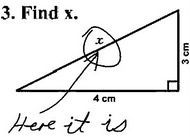Sometimes "bug juice" really is! There are crushed cochineal beetles in our food...
On my telenovela, Alborada, the villanous Don Diego is in trouble for selling adulterated cochinilla. My commenters have said it's a tiny bug that grows on cactuses, is used for dying, and at times has been "worth its weight in gold." Somebody also said the crushed bugs were used to color foods. I didn't believe it, but here is the story from today's Wall Street Journal! Now I believe!
I assume that you are a stickler for accuracy. Therefore, I must point out a mistake.
The cochineal insect is NOT a beetle; it is a scale insect. It is not even remotely related to beetles except that both are insects. Calling it a beetle is like calling a gorilla a porpoise. It can properly be called a bug, since it belongs to the order Hemiptera the members of which have the common name "bugs."
By the way, it is the females and eggs which are used to make dye. The females are wingless and have six legs. It would seem the Biblical injuction would not apply here.
M.C. Thomas, Ph.D.
Florida State Collection of Arthropods
Florida Department of Agriculture & Consumer Services
Is There a Bug in Your Juice? New Food Labels Might Say
by Jane Zhang for the Wall Street Journal, January 27, 2006
Food makers may not want to dwell on it, but the ingredient that gives Dannon Boysenberry yogurt and Tropicana Ruby Red Grapefruit juice their distinctive colors comes from crushed female cochineal beetles.
Pressed by consumer advocates, the Food and Drug Administration is expected to ... require companies to disclose when a food contains beetle-derived colorings.
Under current FDA regulations, food labels must identify certain man-made colorings by name, such as FD&C Red No. 40. But for carmine, cochineal and other naturally occurring ingredients, companies can use terms such as "color added" or, oddly, "artificial color."
[An] advocacy group, and a small but vocal group of consumers who are allergic to the ingredients have pushed for stiffer rules.
Joining the chorus are vegetarians, who don't want to eat insects, and consumers observing kosher dietary practices. ... "There are a lot of people who will not be happy to know that they are eating products that contain dried beetle."
[The "Senior Director of Nutrition Policy" at a food-industry group objects]: "It's not part of the requirement for other animal-derived ingredients. Lard is 'lard.' It doesn't say 'pork' after it. 'Milk' doesn't say 'from cow.' 'Butter' doesn't say 'from cow.'"
Spaniards found Mexicans cultivating the red cochineal beetles in 1518. Today, the bugs are raised on farms in Peru, Mexico and the Canary Islands, where they feed on cacti.
The bodies of female beetles are dried, ground and heated, and the colored powder is filtered out. It takes 70,000 beetles to make one pound of marketable carmine.
The cochineal pigment also is used in cosmetics and textiles.
Vegetarians are rooting for the label change. A year ago, while sitting at a movie theater, Lucinda Hoffmaster first saw the word "carmine" on a box of Hershey Co.'s Good & Plenty candies. Not knowing what the word meant, the Montgomery, Ala., resident went home and Googled the word. "I was just horrified," recalls the 57-year-old Ms. Hoffmaster, the mother of two vegetarian daughters. "I am thinking, 'Why do they put dried bug carcasses in a candy marketed for children?'"
Hershey declined to comment.
UPDATE: Dustbury had a comment. He exclaimed:
Wait a minute. Bugs aren't kosher?
Leviticus 11:20-23 [ESV]:'All winged insects that go on all fours are detestable to you. Yet among the winged insects that go on all fours you may eat those that have jointed legs above their feet, with which to hop on the ground. Of them you may eat: the locust of any kind, the bald locust of any kind, the cricket of any kind, and the grasshopper of any kind. But all other winged insects that have four feet are detestable to you.'
Of course, "all fours" makes little sense in the context of insects, unless they're limping. But no, apparently bugs aren't kosher, and just to make sure:'Of the "winged swarming things" (winged insects), a few are specifically permitted (Lev. 11:22), but the Sages are no longer certain which ones they are, so all have been forbidden.'
Technorati Tags: Food, Bugs, Insects, Beetles, Cochineal, Cochinilla, FDA



 A few of my daughter
Melina's great posts:
A few of my daughter
Melina's great posts:








3 Comments:
Luckily, I have never eaten or drunk (drank?) anything you mentioned!
CNN just picked this up too. Headline:
FDA: You're Eating Crushed Bug Juice
I assume that you are a stickler for accuracy. Therefore, I must point out a mistake.
The cochineal insect is NOT a beetle; it is a scale insect. It is not even remotely related to beetles except that both are insects. Calling it a beetle is like calling a gorilla a porpoise. It can properly be called a bug, since it belongs to the order Hemiptera the members of which have the common name "bugs."
By the way, it is the females and eggs which are used to make dye. The females are wingless and have six legs. It would seem the Biblical injuction would not apply here.
M.C. Thomas, Ph.D.
Florida State Collection of Arthropods
Florida Department of Agriculture & Consumer Services
Post a Comment
<< Home